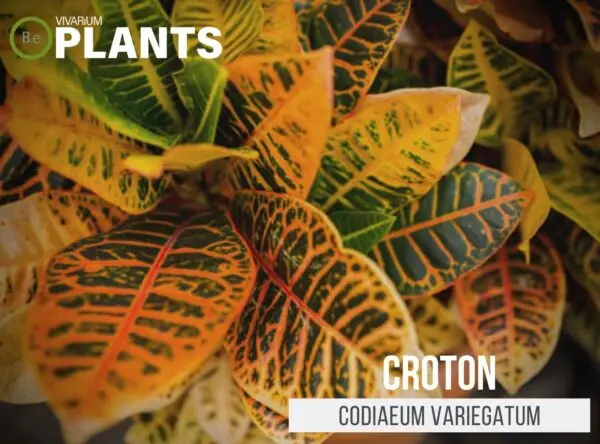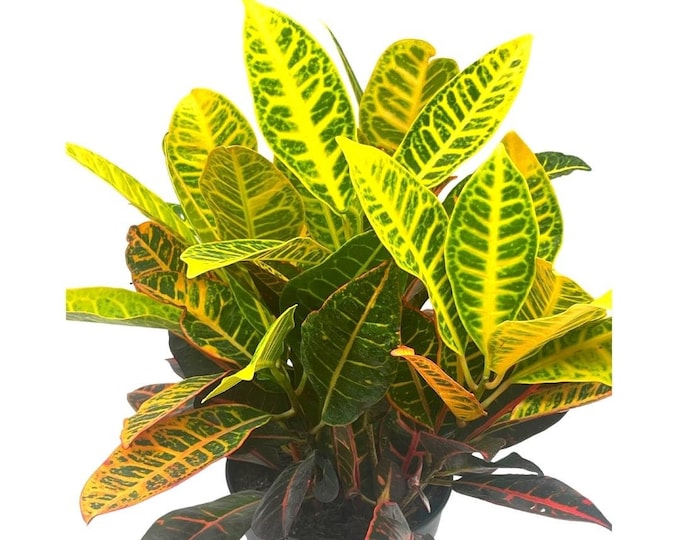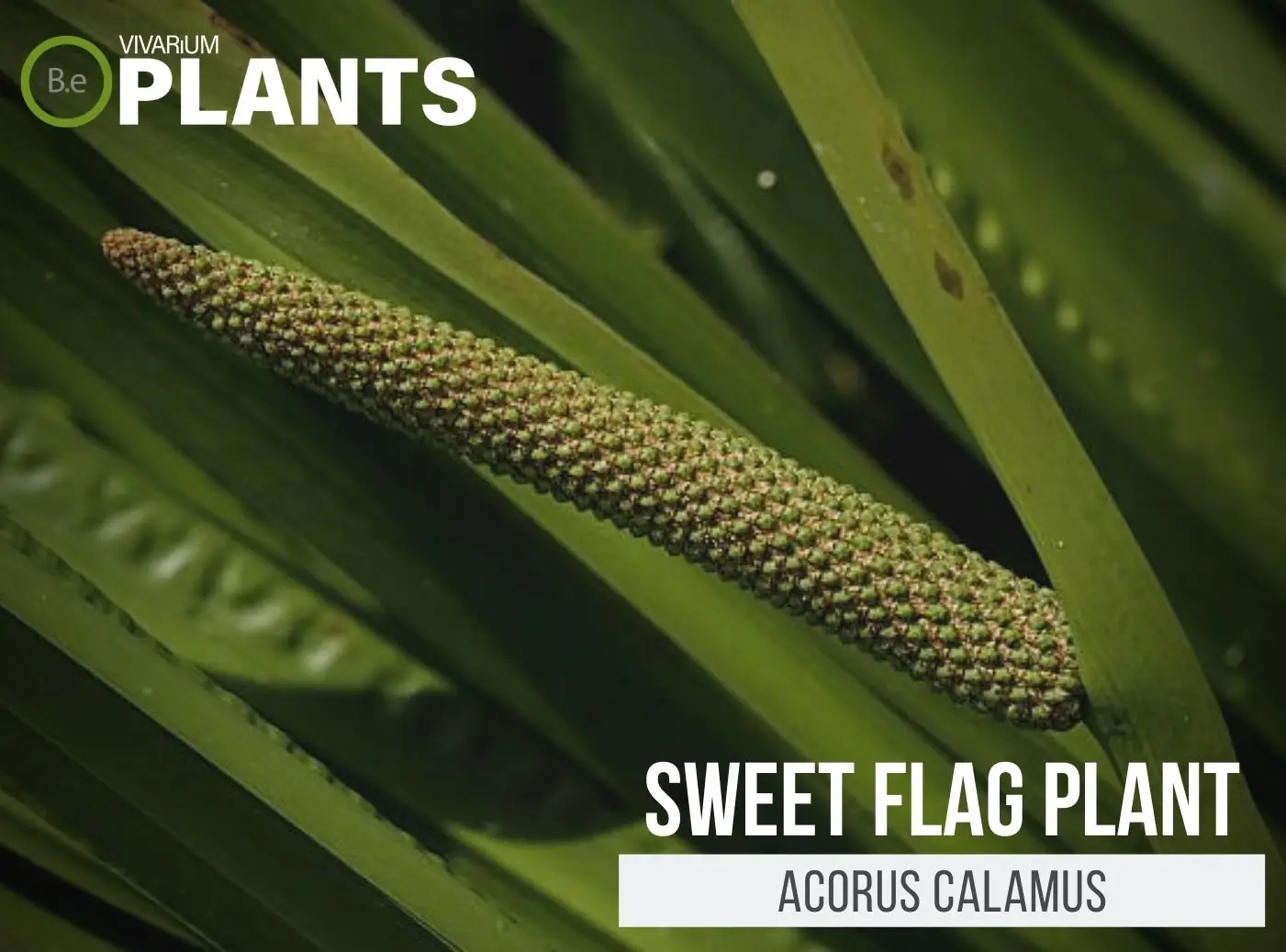Codiaeum variegatum (Croton) is an evergreen shrub with beautiful foliage and striking colors that is native to South East Asia, Australia, and many other tropical regions.
Its leaves growing outward and upward, come in many shapes and sizes that can range from thin to wide and thin to thick depending on the individual species.
The centerpiece of any vivarium is none other than the most popular choice of pond plant among enthusiasts.
It’s favored for its resilience, low maintenance, and stunning appearance.
| Quick Stats: | |
|---|---|
| Scientific Name | Codiaeum variegatum |
| Common Name | Croton, Variegated Croton, Joseph’s Coat |
| Family Name | Euphorbiaceae |
| Habitat | Sub-Tropical |
| Temperature | 60°F to 85°F |
| Height | Up to 4 ft. |
| pH | 6.1 to 7.2 |
| Lighting | Bright |
What Is Croton?
Codiaeum variegatum, commonly called Croton, is an evergreen perennial shrub, native to South East Asia, and Australia.
It was brought to the West Indies during the 19th century and is now widely cultivated in tropical and sub-tropical environments.
It is commonly used as an ornamental plant and is popular in vivariums and ponds due to its striking foliage and adaptability.


Croton Facts
When it comes to color, croton has a vast assortment of hues.
Colors can range from yellow to red, as well as orange and purple combinations.
Some leaves can be a solid color, while others can be two-toned or multi-colored for a unique look.
Croton also comes in different shapes, from thin and narrow to wide and oval.
Description
Croton is a woody and slightly spiny evergreen shrub with broad sprawling horizontal branches.
It grows to about two to four feet in its natural habitat and will grow in a clumping form normally around two to three feet high in a vivarium.
Its leaves are mostly broad and leathery and grow similar to clusters.
Habitat
Croton is native to tropical and sub-tropical areas such as South East Asia, Australia, the West Indies, and other humid climates.
In the wild, it grows in an upright form up to four feet high in open areas and along the roadsides.
pH Preference
Croton prefers slightly acidic to slightly alkaline soils with a pH range of 6.1 to 7.2.
The lower the pH, the brighter the vibrant colors of the leaves.
If the pH is too high then the leaves will lose their vibrant color and start to pale.
Vivarium Type
Codiaeum variegatum is quite an easy-going species.
With that in mind, it will not be too complicated when choosing the type of enclosure it is grown in.
It is best to try and replicate the plant’s natural habitat as much as possible.
Doing so will make it easier to provide this foliage plant with its basic needs.
The proper setup and theme of the enclosure will make a big difference to the overall look and health of the plant.
Be sure to choose setups that are moist and high in humidity.
Here are recommended vivariums it will do well in:
-
- Paludariums – Half aquatic/ half terrain-based enclosure.
- Ripariums – Mostly aquatic-based enclosures with some terrain features present.
- Terrariums – Fully terrain-based enclosures with little to no aquatic features.
Vivarium Placement
Croton is best planted in the backdrop or in the middle of the tank, where it can emphasize the beauty of the other vivarium plants.
However, it is also suitable to be planted in the foreground as an accent plant.
Its leaves also provide shading and cover for smaller inhabitants and make great hideouts for them.
Substrate
Croton can be planted on any sub-aquatic substrate, but it prefers a lightly damp, well-draining mixture. Humus or loamy soil with a pH of 6.1 to 7.2 would be best.
Lighting
Croton should be placed in a well-lit spot in the vivarium.
It does not need any specific type of lighting and can tolerate full sun, partial sun, or partial shade depending on your desired aesthetics for the setup.
Buy Croton
When buying Codiaeum variegatum, there are a few things to keep in mind.
Making sure the plant is healthy when purchased is essential for its success in a vivarium or pond.
Vegetation that is already in poor conditions will have a very hard time adjusting to new environments.
Click the image below to learn more about the current price and other relative info about this plant.
Croton Care & Propagation
Croton is a low-maintenance plant and very easy to care for.
It is not a plant that needs consistent pruning and generally does not require too much upkeep.
If pruning is needed then just pinch off old leaves because this encourages more vigorous growth and more vibrant coloration.
How To Grow
To propagate croton from cuttings, take a cutting from a mature stem of the plant.
Make sure to make the cutting just before a node or joint; the lower leaves should be removed as well.
Dip the cutting into root hormone and place it in a damp planting mix.
The cutting should produce roots within a couple of weeks and can be transplanted into the substrate in four to six weeks.
Water Requirements
Croton requires constant moisture and the substrate should be kept evenly damp.
Light misting of the foliage once a week is usually enough.
The amount of water needed can vary depending on the humidity level and temperature.
Therefore, it is important to always keep an eye on the moisture level of the substrate.
Plants Similar To Croton
Adding diversity to an enclosure is key to an aesthetically pleasing setup.
Try mixing up the look of your vivarium with different flora that can easily co-exist in the same types of environment.
Furthermore, if for some reason you find Croton hard to acquire or would like to consider something similar to this plant…
Here are other pond plants you might find will do well with or in place of Codiaeum variegatum:
Conclusion
Overall, Croton is a great choice for any type of vivarium or pond.
Its wide range of color options and hardiness make it very adaptable and easy to care for.
With enough light, moisture, and warmth, this plant can be a beautiful addition to any setup.
Frequently Asked Questions
Yes, Codiaeum variegatum (commonly known as Croton) is an indoor plant typically grown for its decorative foliage. It requires plenty of bright, indirect light and regular watering.
Yes, Codiaeum (also known as Croton) plants are easy to care for and maintain. These plants prefer bright, indirect light and should be kept moist. Pests can be an issue with Codiaeum, so regular inspection is necessary.
Crotons (Codiaeum variegatum) need plenty of bright, indirect sunlight to look their best and thrive. While crotons can tolerate some periods of shade, they should not be placed in a shady spot for long periods of time as this can cause their vibrant leaf coloration to fade.
Crotons typically require watering once a week, or when the top two inches of soil feels dry.
No, croton is not poisonous. The Croton leaf and sap may cause skin irritation in some people.




